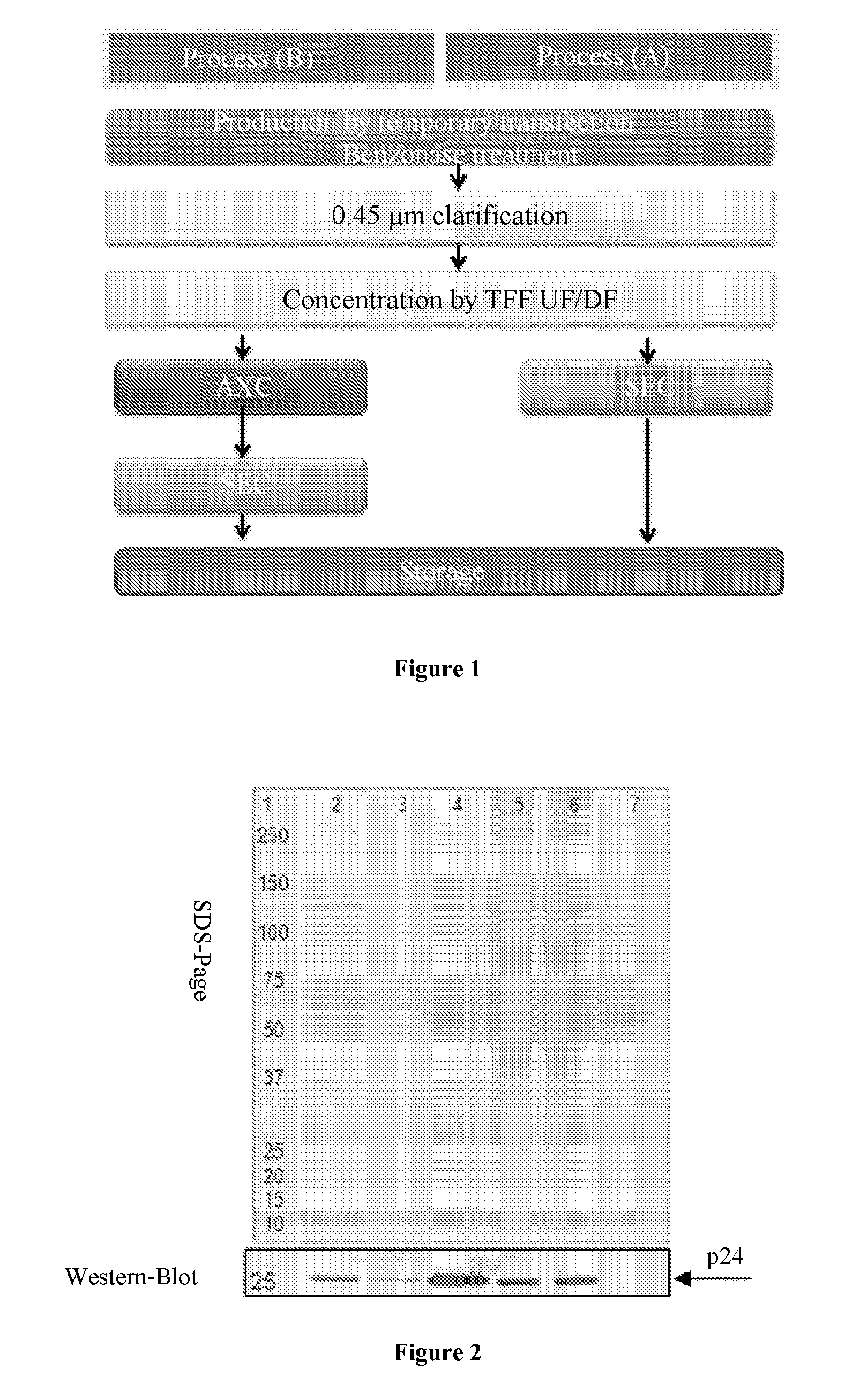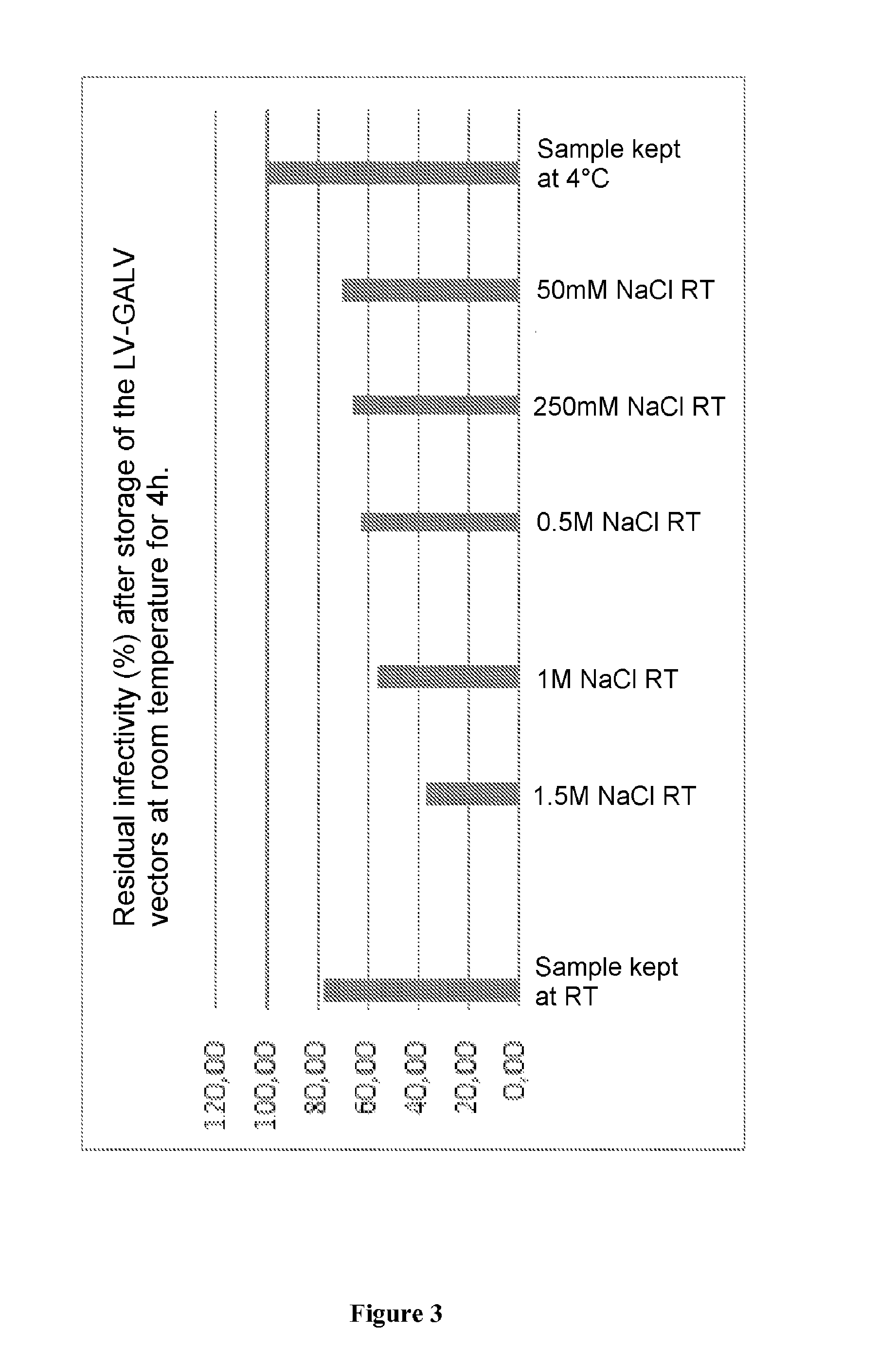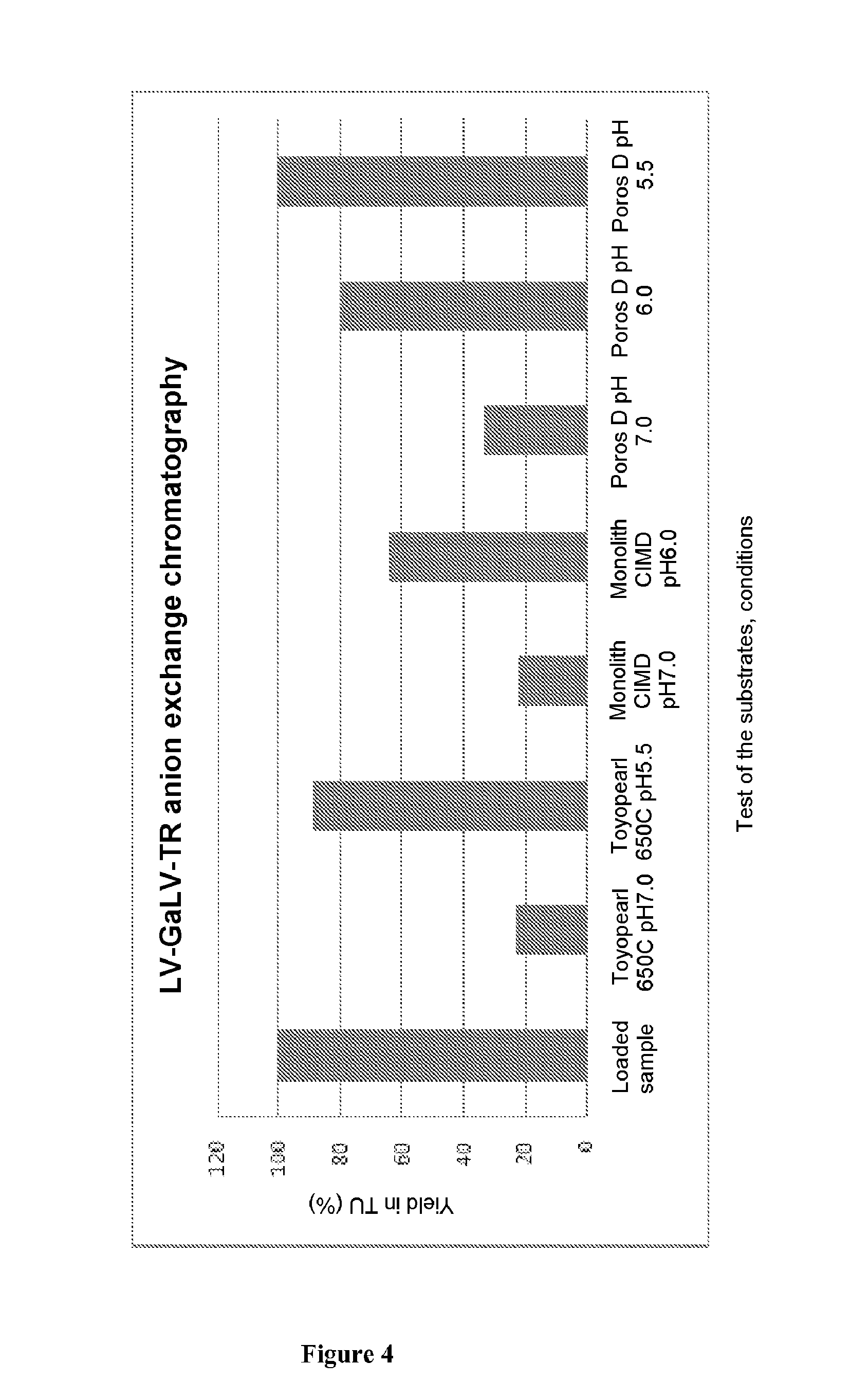Method for purifying enveloped viruses or viral vectors
a technology of enveloped viruses and vectors, applied in the field of purification methods of enveloped viruses or viral vectors, can solve the problems of limiting the purification of the inability to widely use viral vector pseudotyped with other envelope proteins, and the inability to purify this type of pseudotyped vector, so as to and improve the yield of purification
- Summary
- Abstract
- Description
- Claims
- Application Information
AI Technical Summary
Benefits of technology
Problems solved by technology
Method used
Image
Examples
examples
[0072]The studies reported in the present application benefited from a subsidy via the 7th Framework Program of the European Community (FP7 / 2007-2013), under number 222878.
Material and Methods
Cells:
[0073]The HEK293T and HCT116 cell lines (colorectal cancer cells CCL-247, origin: ATCC) are cultivated at 37° C., with 5% CO2 in Dulbecco's modified Eagle's medium (Gibco) (DMEM+Glutamax) supplemented with 2 to 10% of fetal calf serum (FCS) (Life Technologies). Culture medium: DMEM / FCS buffered at pH 6.0 by adding hydrochloric acid (HCl 37%, Sigma-Aldrich), and then filtered by means of a Corning® 1,000 mL filter (0.22 μm PES (polyethersulfone)).
Production of Viral Vectors:
[0074]Viral vectors derived from HIV-1, pseudotyped with various glycoproteins are produced by transient quadri-transfection with calcium phosphate in 293T cells, by 4 plasmids as described by Merten et al. (2011). 2×108 293 T cells are sown in a 1,760-cm2 Hyperflask (Corning) in 550 mL of DMEM 10% FCS (Kutner et al. 20...
PUM
| Property | Measurement | Unit |
|---|---|---|
| volume | aaaaa | aaaaa |
| volume | aaaaa | aaaaa |
| pH | aaaaa | aaaaa |
Abstract
Description
Claims
Application Information
 Login to View More
Login to View More - R&D
- Intellectual Property
- Life Sciences
- Materials
- Tech Scout
- Unparalleled Data Quality
- Higher Quality Content
- 60% Fewer Hallucinations
Browse by: Latest US Patents, China's latest patents, Technical Efficacy Thesaurus, Application Domain, Technology Topic, Popular Technical Reports.
© 2025 PatSnap. All rights reserved.Legal|Privacy policy|Modern Slavery Act Transparency Statement|Sitemap|About US| Contact US: help@patsnap.com



